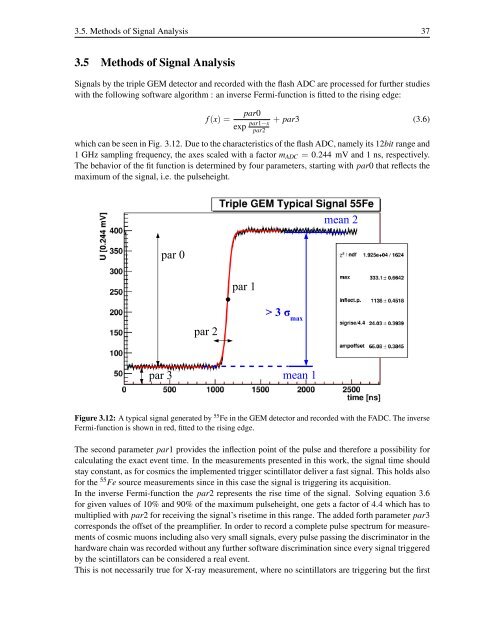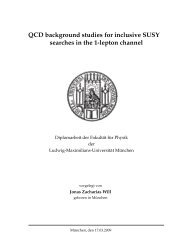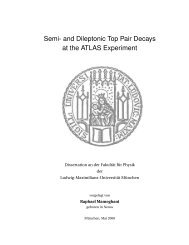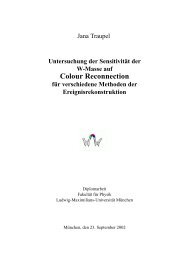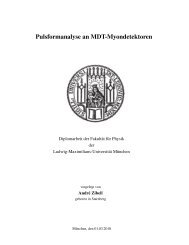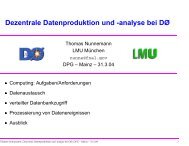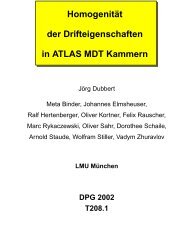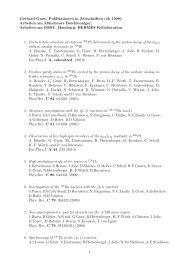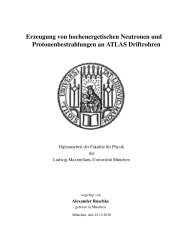development of micro-pattern gaseous detectors – gem - LMU
development of micro-pattern gaseous detectors – gem - LMU
development of micro-pattern gaseous detectors – gem - LMU
You also want an ePaper? Increase the reach of your titles
YUMPU automatically turns print PDFs into web optimized ePapers that Google loves.
3.5. Methods <strong>of</strong> Signal Analysis 37<br />
3.5 Methods <strong>of</strong> Signal Analysis<br />
Signals by the triple GEM detector and recorded with the flash ADC are processed for further studies<br />
with the following s<strong>of</strong>tware algorithm : an inverse Fermi-function is fitted to the rising edge:<br />
f (x) =<br />
par0<br />
exp par1−x<br />
par2<br />
+ par3 (3.6)<br />
which can be seen in Fig. 3.12. Due to the characteristics <strong>of</strong> the flash ADC, namely its 12bit range and<br />
1 GHz sampling frequency, the axes scaled with a factor mADC = 0.244 mV and 1 ns, respectively.<br />
The behavior <strong>of</strong> the fit function is determined by four parameters, starting with par0 that reflects the<br />
maximum <strong>of</strong> the signal, i.e. the pulseheight.<br />
par 3<br />
par 0<br />
par 2<br />
par 1<br />
> 3 σ max<br />
mean 1<br />
mean 2<br />
Figure 3.12: A typical signal generated by 55 Fe in the GEM detector and recorded with the FADC. The inverse<br />
Fermi-function is shown in red, fitted to the rising edge.<br />
The second parameter par1 provides the inflection point <strong>of</strong> the pulse and therefore a possibility for<br />
calculating the exact event time. In the measurements presented in this work, the signal time should<br />
stay constant, as for cosmics the implemented trigger scintillator deliver a fast signal. This holds also<br />
for the 55 Fe source measurements since in this case the signal is triggering its acquisition.<br />
In the inverse Fermi-function the par2 represents the rise time <strong>of</strong> the signal. Solving equation 3.6<br />
for given values <strong>of</strong> 10% and 90% <strong>of</strong> the maximum pulseheight, one gets a factor <strong>of</strong> 4.4 which has to<br />
multiplied with par2 for receiving the signal’s risetime in this range. The added forth parameter par3<br />
corresponds the <strong>of</strong>fset <strong>of</strong> the preamplifier. In order to record a complete pulse spectrum for measurements<br />
<strong>of</strong> cosmic muons including also very small signals, every pulse passing the discriminator in the<br />
hardware chain was recorded without any further s<strong>of</strong>tware discrimination since every signal triggered<br />
by the scintillators can be considered a real event.<br />
This is not necessarily true for X-ray measurement, where no scintillators are triggering but the first


